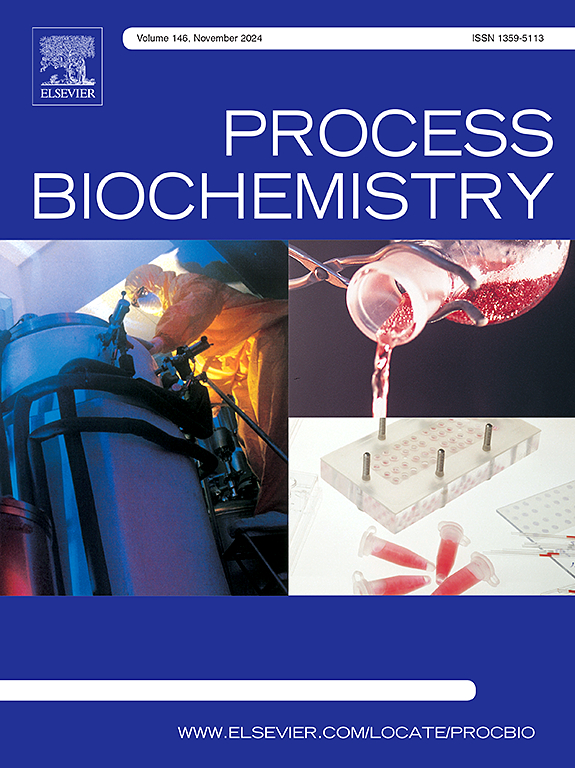利用新型动态组合设计方案突破葡萄糖氧化酶在极热环境中的热稳定性
IF 3.7
3区 生物学
Q2 BIOCHEMISTRY & MOLECULAR BIOLOGY
引用次数: 0
摘要
提高葡萄糖氧化酶(Gox)的耐热性对其工业应用至关重要。然而,在基于单一 Gox 结构的传统设计方法中,预测和测试了数百或数轮变体,但在高温条件下的热稳定性提高有限。在这里,我们通过分析 GoxM8(M8)的动态构象建立了一种精确定位残基的方法,并在保持活性的同时进一步提高了耐热性。我们采用新颖的动态组合方法,结合 FireProt 计算分析,从 M8 的不同构象中获得了最佳突变体 V402F。在 80 ℃ 2 分钟的条件下,V402F 的残余活性是 M8 的六倍,而且酶活性没有损失。实验验证和稳定性机制的计算分析表明了以往灵活酶设计策略的不足,证明了我们方法的有效性。因此,我们提出了一种热稳定性更好的 Gox 变体,以及一种更精确、更有效的 Gox 和其他柔性酶的设计策略。本文章由计算机程序翻译,如有差异,请以英文原文为准。
Break through the thermostability of glucose oxidase in extremely thermal environments with a novel dynamic ensemble design protocol
Enhancing the thermostability of glucose oxidase (Gox) is crucial for its industrial applications. However, in traditional design methods based on a single Gox structure, hundreds of or several rounds of variants were predicted and tested, with limited thermostability enhancement under high temperature conditions. Here, we established a method for precisely locating residue by analysing the dynamic conformations of GoxM8 (M8) and further enhancing thermostability while maintaining activity. Our novel dynamic ensemble approach, coupled with FireProt computational analyses, was used to obtain the best mutant, V402F, from diverse conformations of M8. V402F residual activity was six times that of M8 at 80 ℃ for 2 min, with no loss of enzyme activity. Experimental validation and computational analysis of stability mechanisms demonstrated the deficiencies of previous design strategies for flexible enzymes, proving the validity of our approach. Thus, we present a Gox variant with improved thermostability, as well as a more precise and efficient design strategy for Gox and other flexible enzymes.
求助全文
通过发布文献求助,成功后即可免费获取论文全文。
去求助
来源期刊

Process Biochemistry
生物-工程:化工
CiteScore
8.30
自引率
4.50%
发文量
374
审稿时长
53 days
期刊介绍:
Process Biochemistry is an application-orientated research journal devoted to reporting advances with originality and novelty, in the science and technology of the processes involving bioactive molecules and living organisms. These processes concern the production of useful metabolites or materials, or the removal of toxic compounds using tools and methods of current biology and engineering. Its main areas of interest include novel bioprocesses and enabling technologies (such as nanobiotechnology, tissue engineering, directed evolution, metabolic engineering, systems biology, and synthetic biology) applicable in food (nutraceutical), healthcare (medical, pharmaceutical, cosmetic), energy (biofuels), environmental, and biorefinery industries and their underlying biological and engineering principles.
 求助内容:
求助内容: 应助结果提醒方式:
应助结果提醒方式:


